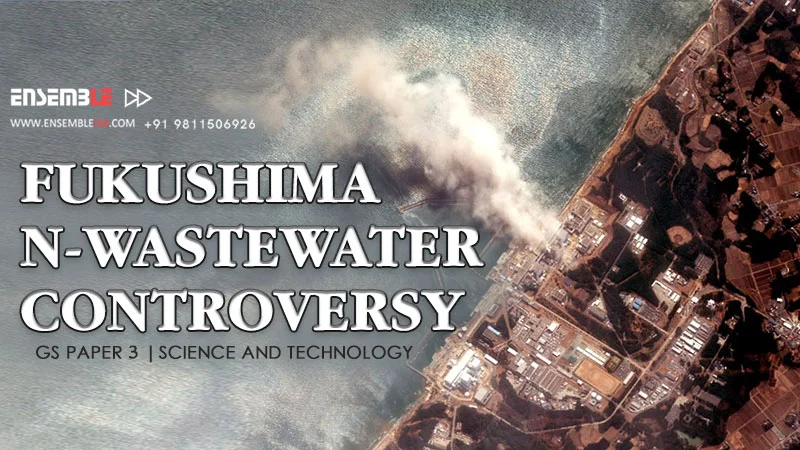N-Wastewater: Fukushima
- Japan’s government announced plans to release over one million tons of contaminated water from the Fukushima nuclear plant into the sea over the next 30 years On April 13, 2021.
- TEPCO has been in charge of decommissioning the Fukushima Daiichi power plant, and managing the waste since 2011.
TEPCO (Tokyo Electric Power Company) works tirelessly to continually provide a stable, high-quality power supply.
- The water has been treated with multiple techniques. Particularly the Advanced Liquid Processing System (ALPS), which removes 62 types of radioactive materials.
The Advanced Liquid Processing System (ALPS), a multi-nuclide removal system, removes various radioactive materials from contaminated water.
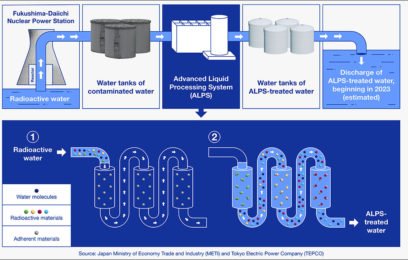
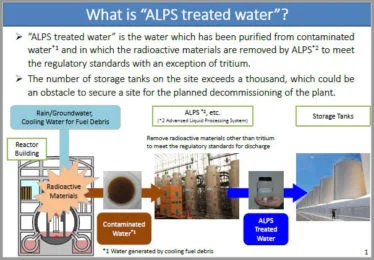
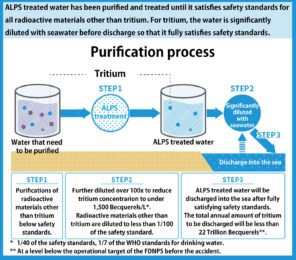
A key factor for Japan in maintaining relations with South Korea in this way that it has been transparency over the treatment and release process.
- South Korea’s government, following repeated consolation by the IAEA, has told people that the water and the seafood are safe.
ALPS is a pumping and filtration system, which uses a series of chemical reactions to remove 62
Radio nuclides from contaminated water.
- ALPS is not able to remove tritium from the contaminated water.
Fukushima: N-Wastewater
Tritium:
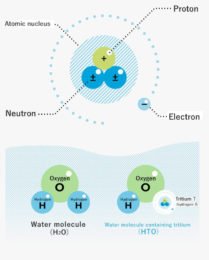
- Tritium is a radioactive isotope of the element hydrogen. has the lowest radiological impact of all naturally occurring radio nuclides in seawater.
- Tritium is also a by-product of operating nuclear power plants to produce electricity.
Regulation on Tritium :
The United States Nuclear Regulatory Commission (NRC) requires any person to have a license to manufacture, process, produce or transfer products containing tritium. Devices containing high levels of tritium must be handled and disposed of within the requirements of the NRC license and regulations.
The link to join the course : Online Courses
Removal of Tritium
Tritium is formed every day on earth by the cosmic radiation from space, and exists in our environment as water. Tritium is also formed by radiation at nuclear power facilities both within and outside of Japan. The rain that falls on us, the water in our rivers, and even our drinking water, contains 0.1~1 Becquerel’s*1 of tritium*2 per liter. The time it takes for the radioactivity of tritium to fall to half its original value (“half-life”) is 12.3 years.
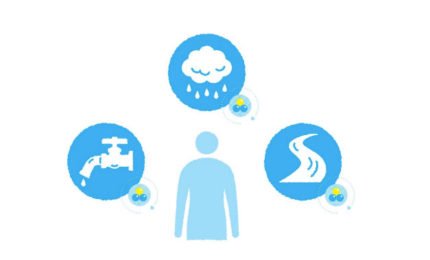
- It is technically very difficult to remove tritiated water ( Tritiated water is a radioactive form of water in which the usual protium atoms are replaced with tritium) from water.
- Tritium is an isotope of hydrogen, and water containing tritium has chemical features almost identical to water with ordinary hydrogen.
Harmful for Human ?
It is a hazard only when taken inside the body.
Primarily Tritium enters in the body after drinking tritiated water.
People may also inhale tritium as a gas or absorb it through their skin, but exposure to harmful levels of tritium through these exposure pathways is very unlikely.
Tritium has little impact on the human body compared to other radioactive materials.
The impact of tritium on the human body is approximately 1/700 that of radioactive cesium-137, which is used as a radioactive material for setting standards for food products.
Fukushima: N-Wastewater
Best Online Coaching for Civil Service_IAS_ UPSC_IFS_IPS
Free Study Material ENSEMBLE IAS ACADEMY | Call +91 98115 06926 | Visit us:- https://ensembleias.com/ | Online Store: https://online.ensemble.net.in/
#Tritum #TEPCO #electricity #radio_active_element #contaminated_water #science_tech #current_affair #upsc_GS_paper #GSPaper3 #civilservicesstudy #ensembleiasacademy #geographyoptional #k_siddharthasir #strategicthinker #ias #civilservices #upsc_motivation #upsc_aspirants #upsc_exam #trendsingeography
Source: The Hindu



